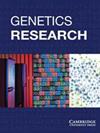髋关节置换术中接受超声引导的腰丛-坐骨神经复合阻滞的老年患者NSE、S100β、Aβ和促炎细胞因子浓度降低
IF 2.1
4区 生物学
Q4 GENETICS & HEREDITY
引用次数: 3
摘要
目的髋部骨折的增加与人口老龄化有关,人口老龄化在许多国家造成了巨大的医疗负担。髋关节置换术已被批准为髋部骨折患者的一种非常成功的手术干预。手术干预中麻醉选择的不同与患者的预后有关。本研究主要探讨超声引导下腰丛-坐骨神经联合阻滞在老年髋部骨折患者中的应用。方法回顾性分析62例老年患者行脊髓-硬膜外联合麻醉,58例老年患者行超声引导下腰丛-坐骨神经联合阻滞术。血流动力学监测包括脉搏血氧饱和度(SpO2)、心率和血压,视觉模拟量表(VAS)评估疼痛强度,蒙特利尔认知评估(MoCA)评估认知功能,血清神经元特异性烯醇化酶(NSE)、S100 β蛋白(S100-β)和β淀粉样蛋白(Aβ)水平,以及白细胞介素-6 (IL-6)、白细胞介素-1β (IL-1β)、肿瘤坏死因子-α (TNF-α)的免疫功能。高敏c反应蛋白(hs-CRP)。此外,还分析了住院时间(LOS)和包括血肿、低血压、恶心和呕吐在内的不良反应。结果超声引导腰丛-坐骨神经联合阻滞患者麻醉后5 min、30 min及术后舒张压、收缩压明显低于脊髓硬膜外联合麻醉患者(P < 0.05),术后12、24、48 h VAS评分明显低于脊髓硬膜外联合麻醉患者(P < 0.05);术后12 d MoCA评分较高(P < 0.05)。两组患者术后10 d NSE、S100β、Aβ、IL-6、IL-1β、TNF-α、hs-CRP水平均显著高于术前(P < 0.05)。超声引导下腰丛-坐骨神经联合阻滞组患者NSE、S100β、Aβ、IL-6、IL-1β、TNF-α、hs-CRP表达明显低于脊髓-硬膜外联合麻醉组(P < 0.05)。两组患者在低血压、呕吐等方面的发生率差异无统计学意义(P < 0.05),但在总不良反应发生率和LOS方面差异有统计学意义(P < 0.05)。结论超声引导腰丛-坐骨神经联合阻滞在髋关节置换术中的应用有助于稳定血流动力学,减轻术后疼痛强度。可减轻老年髋部骨折患者的认知和免疫功能损害。本文章由计算机程序翻译,如有差异,请以英文原文为准。
Reduced Concentrations of NSE, S100β, Aβ, and Proinflammatory Cytokines in Elderly Patients Receiving Ultrasound-Guided Combined Lumbar Plexus-Sciatic Nerve Block during Hip Replacement
Objective The increase of hip fractures is related to the aging of the population, which has caused a huge medical burden in many countries. Hip replacement has been approved as a highly successful surgical intervention for the patients with hip fractures. Different anesthesia choices in the surgical intervention are associated with the prognosis of patients. This study focused on investigating the application of ultrasound-guided combined lumbar plexus-sciatic nerve block in elderly patients with hip fractures. Methods In this retrospective study, 62 elderly patients received combined spinal-epidural anesthesia and 58 elderly patients underwent ultrasound-guided combined lumbar plexus-sciatic nerve block during the surgery. Hemodynamic monitoring including pulse oxygen saturation (SpO2), heart rate and blood pressure, the assessment of pain intensity using Visual Analogue Scale (VAS), cognitive function assessment through Montreal Cognitive Assessment (MoCA) and biomarkers consisting of serum levels of neuron specific-enolase (NSE), S100 beta protein (S100-β), and amyloid beta protein (Aβ), as well as immune function by interleukin-6 (IL-6), interleukin-1β (IL-1β), tumor necrosis factor-α (TNF-α), and high sensitivity C-reactive protein (hs-CRP) were detected in this study. Furthermore, length of hospital stay (LOS) and adverse reactions including hematoma, hypotension, nausea, and vomit were analyzed. Results The findings indicated that comparing with the patients receiving combined spinal-epidural anesthesia, those undergoing ultrasound-guided combined lumbar plexus-sciatic nerve block showed significantly lower level of heart rate, higher level of SpO2, and lower level of diastolic pressure and systolic pressure at 5 minutes and 30 minutes after anesthesia and after surgery (P < 0.05), indicated obviously lower VAS score at 12, 24, and 48 hours after surgery (P < 0.05), and revealed higher MoCA score at 12 days after surgery (P < 0.05). A significantly higher level of NSE, S100β, Aβ, IL-6, IL-1β, TNF-α, and hs-CRP was revealed in the two groups receiving different anesthesia methods at 10 days after surgery compared with that before surgery (P < 0.05). However, the patients receiving ultrasound-guided combined lumbar plexus-sciatic nerve block had obviously lower expression of NSE, S100β, Aβ, IL-6, IL-1β, TNF-α, and hs-CRP compared with the group accepting combined spinal-epidural anesthesia (P < 0.05). The two groups indicated no significant difference in incidence of hypotension and vomit, etc. (P < 0.05), but showed remarkable difference referring to total incidence of adverse reactions and LOS (P < 0.05). Conclusion The application of ultrasound-guided combined lumbar plexus-sciatic nerve block in hip replacement contributes to the stability of hemodynamics and alleviation of postoperative pain intensity. It can reduce cognitive and immune impairment of the elderly patients with hip fractures.
求助全文
通过发布文献求助,成功后即可免费获取论文全文。
去求助
来源期刊

Genetics research
生物-遗传学
自引率
6.70%
发文量
74
审稿时长
>12 weeks
期刊介绍:
Genetics Research is a key forum for original research on all aspects of human and animal genetics, reporting key findings on genomes, genes, mutations and molecular interactions, extending out to developmental, evolutionary, and population genetics as well as ethical, legal and social aspects. Our aim is to lead to a better understanding of genetic processes in health and disease. The journal focuses on the use of new technologies, such as next generation sequencing together with bioinformatics analysis, to produce increasingly detailed views of how genes function in tissues and how these genes perform, individually or collectively, in normal development and disease aetiology. The journal publishes original work, review articles, short papers, computational studies, and novel methods and techniques in research covering humans and well-established genetic organisms. Key subject areas include medical genetics, genomics, human evolutionary and population genetics, bioinformatics, genetics of complex traits, molecular and developmental genetics, Evo-Devo, quantitative and statistical genetics, behavioural genetics and environmental genetics. The breadth and quality of research make the journal an invaluable resource for medical geneticists, molecular biologists, bioinformaticians and researchers involved in genetic basis of diseases, evolutionary and developmental studies.
 求助内容:
求助内容: 应助结果提醒方式:
应助结果提醒方式:


